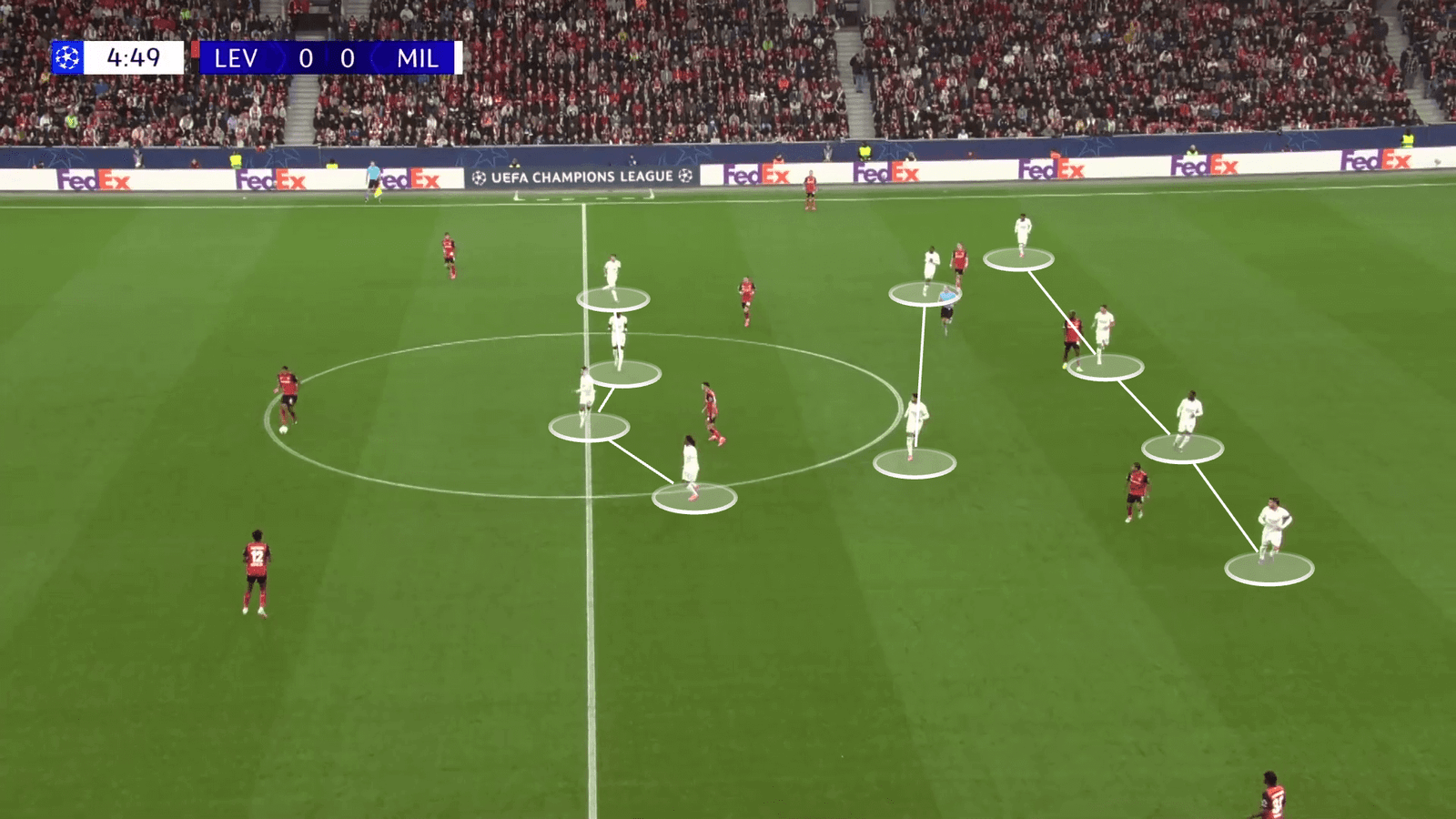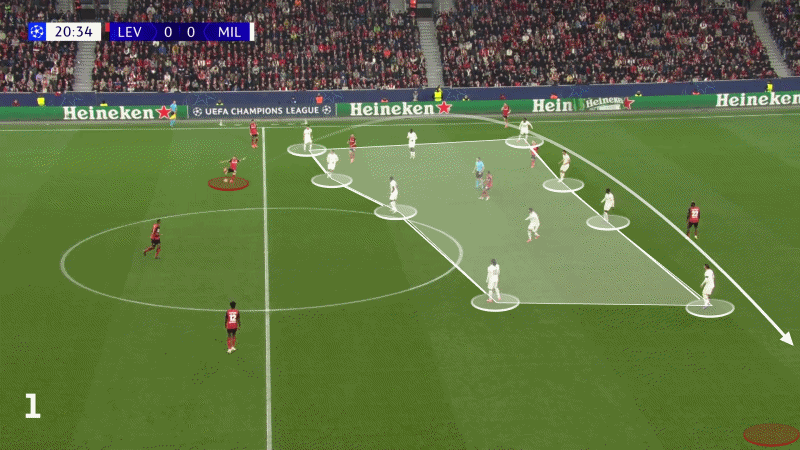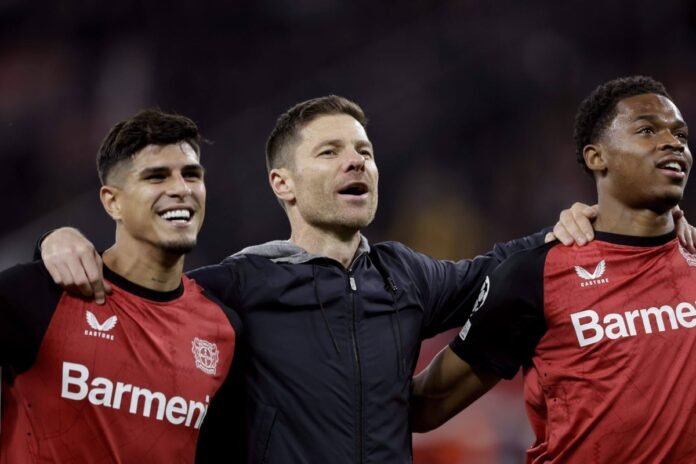Bayer Leverkusen are no strangers to Champions League football.
The BayArena has hosted Europe’s top competition in five of the last 10 seasons but this year, the atmosphere feels different. Xabi Alonso’s side defeated AC Milan 1-0 in their first European home game on Tuesday evening.
There was a palpable sense of expectation from the fans, and understandably so. Leverkusen came agonisingly close to football immortality last season, losing the Europa League final to Atalanta but going unbeaten in the Bundesliga and lifting the DFB-Pokal.
Leverkusen are no longer the surprise package in Europe. They have a target on their backs, so this season could be even more interesting as they transition from the hunters to the hunted.
Xabi Alonso on Tuesday night (Rico Brouwer/Soccrates/Getty Images)
In a way, the Europa League final defeat may prove a crucial — though painful — part of their journey under Alonso. Gian Piero Gasperini’s side handed Leverkusen the possession but ultimately taught them a lesson with their relentless, aggressive, man-marking approach on a balmy May evening in Dublin.
Alonso appears to have learned from those lessons. An early-season loss to RB Leipzig similarly exposed Leverkusen’s weaknesses against man-marking setups, but Alonso has shown his ability to adapt to the opposition — as demonstrated this week by his use of contrasting approaches against Bayern Munich and Milan within four days.
Before the Milan game, Alonso told reporters he expected “high game intelligence”, and Paolo Fonseca’s team were keen to stay compact in their 4-2-4 shape to try to prevent Leverkusen from cutting through the centre of the pitch.

Instead, the space to exploit was in the wide areas, with Leverkusen needing little invitation to maximise the strengths of their flying wing-backs, Alejandro Grimaldo and Jeremie Frimpong.
The pair would frequently hug the touchline to stretch the space, providing an out-ball after Leverkusen attracted Milan’s block to one side of the pitch. Diagonal passes and switches of play — not too dissimilar to the approach Liverpool took against Milan a few weeks ago — were a theme throughout, with summer signing Aleix Garcia a wise selection choice in midfield given his accurate long-range passing.
Passes were either right to left…

… or left to right, two of which were goal-ending sequences. The first (slide 1) saw Frimpong stray marginally offside, but Tah provided a similar ball to the 23-year-old (Slide 3), resulting in Victor Boniface’s simple tap-in at the far post seconds later.

“It was a pattern that we trained,” Alonso told The Athletic after the game. “Milan have a lot of density in the middle, so the space was outside. Our wing-backs didn’t have to be too high or too low, but (the plan) was to make the switch as quick as possible.
“When we have this stability, we got close to the box but it is knowing when to accelerate and when to give more passes because we know the counter-attacking threat of Milan — so we needed to build with proper control.”
Having a strong foundation in possession was key, and the attacking numbers supported Alonso’s plan. Leverkusen’s 22 per cent share of attacking touches in the central third of the pitch was their third-lowest share in European competition since 2022-23. An equal share of 39 per cent on the left and right flanks showed how keen they were to go around Milan’s defensive block.
It helps to have a player with the creative freedom and technical quality of Florian Wirtz to support those wide attacks. Superlatives are commonplace when describing the 21-year-old and his man-of-the-match performance saw him pop up across the attacking line, with the joint-most touches (83) of any Leverkusen player.
While his touchmap below shows a high share of activity in the left half-space, note just how often he popped up on either touchline, catalysing those wide attacks to form overloads for the wing-backs to stay high.

Wirtz’s movement was an example of the intelligence Alonso’s side demonstrated on Tuesday, but he asked his players to show a different side in their 1-1 draw with Bayern Munich last weekend.
Leverkusen stayed in a compact defensive block that shifted between a 5-2-3 and a 5-4-1 (see below) as they looked to frustrate Bayern for long periods. Good communication and concentration are key against elite sides, with Leverkusen’s 32 per cent possession being their lowest share in a Bundesliga game since the 2020-21 season.

It speaks to Alonso’s tactical versatility to adapt his approach to the strengths and weaknesses of the opposition. As fans, we look to a manager’s coaching philosophy from an idealist perspective — expecting them to stick to a defined style — but really the best coaches are pragmatists, always looking to tweak their tactics as the specific contest requires.
“The Bayern game and the Milan game were completely different,” Alonso said in his post-match press conference.
“Italians teams can still press forward, but they wait for you and they want to control the space. German teams normally jump (ie, press high) and they want to put you under a lot of pressure. Sometimes it is difficult to build control but once you get out of this pressure you might have a good chance because the spaces are bigger. So we were prepared for a completely different game tonight and we had to be alert in a different way.”
Leverkusen undoubtedly adapted from game to game during their record-breaking campaign. Still, there is Pep Guardiola-esque onus on Alonso to evolve his side and not rest on his laurels from last season.
Retaining his best players has been a key part of that. Where many of last season’s high-achieving clubs were dismantled and sold for parts in the summer, Leverkusen kep the core of their squad together, with Wirtz undoubtedly the jewel in the crown.
The tactical fundamentals have remained the same in North Rhine-Westphalia, but this version of Leverkusen looks more wily, more pragmatic, and more streetwise — able to wear a different mask as each game demands. It augurs well for the season ahead.
(Top photo: Rico Brouwer/Soccrates/Getty Images)
Read the full article here


